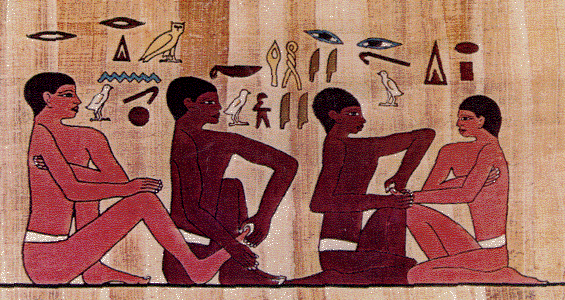EGYPTIAN ANCIENT HISTORY
This Egyptian wall painting is dated to the 6th dynasty, about 2330 B.C. It is the most concrete evidence of the practice of reflexology in ancient culture. The pictograph, depicting the practice of hand and foot reflexology, is located in the tomb of Ankhmahor (highest official after the Pharaoh) at Saqqara, which is also known as the “Physician's Tomb”. The image depicts two practitioners applying pressure to the hands and feet of two other people, with the inscription translating to “Do not let me feel pain” and the response, “I will act as you please”. The two practitioners have dark skin suggesting that they are from Upper Egypt and the recipients have lighter skin suggesting that they are from Lower Egypt.
This pictograph was one of six pictographs on the wall of the tomb representing the physician’s areas of expertise. The other five depict childbirth, dentistry, embalming, circumcision and pharmacology (herbology).
It has been proposed that the knowledge of reflexology migrated slowly from Egypt to Greece, Arabia and then through the Roman Empire to Europe.
